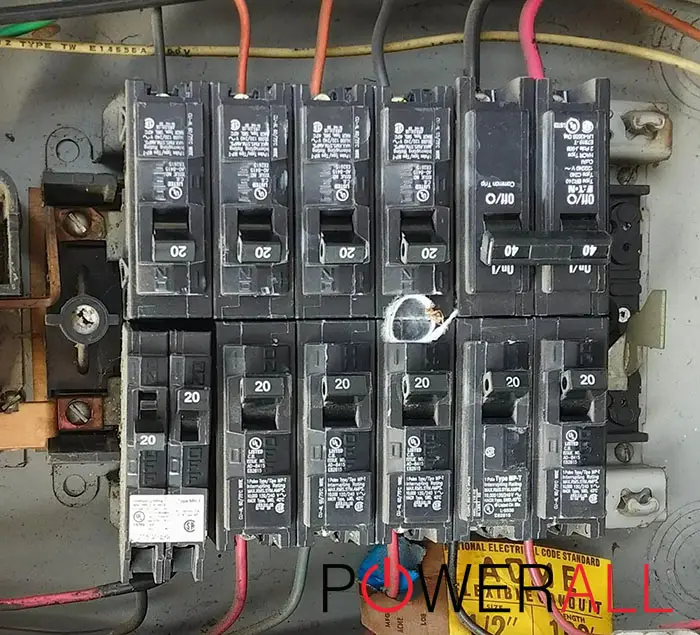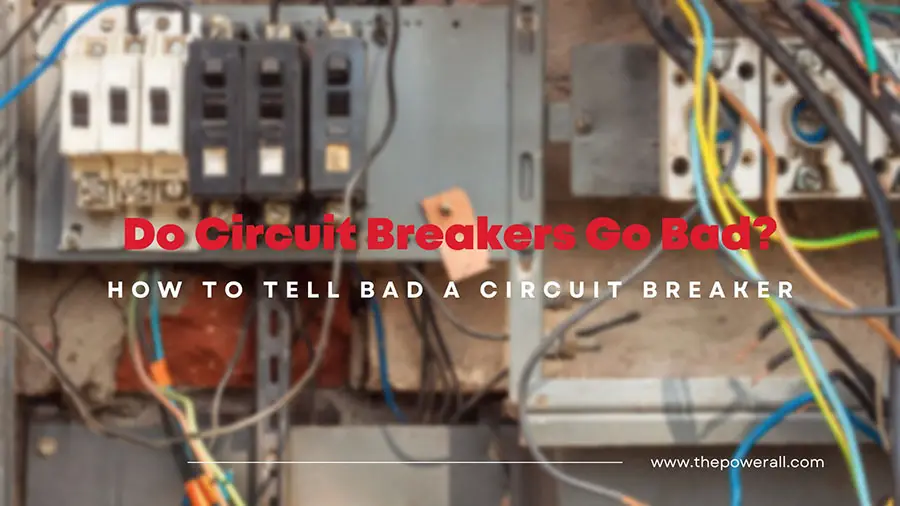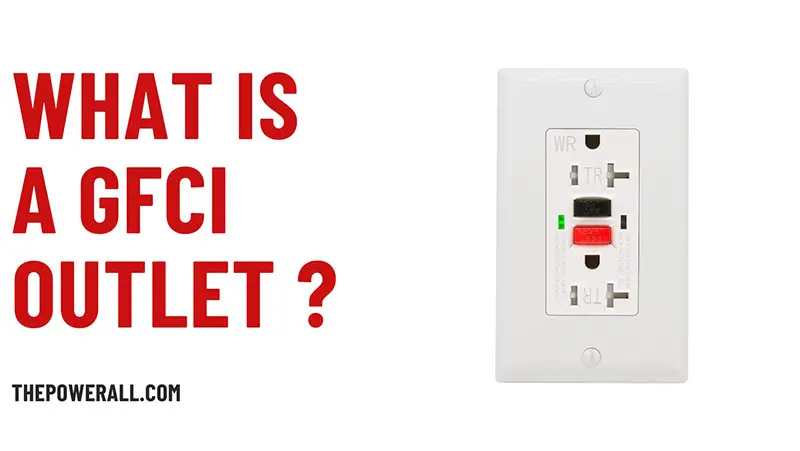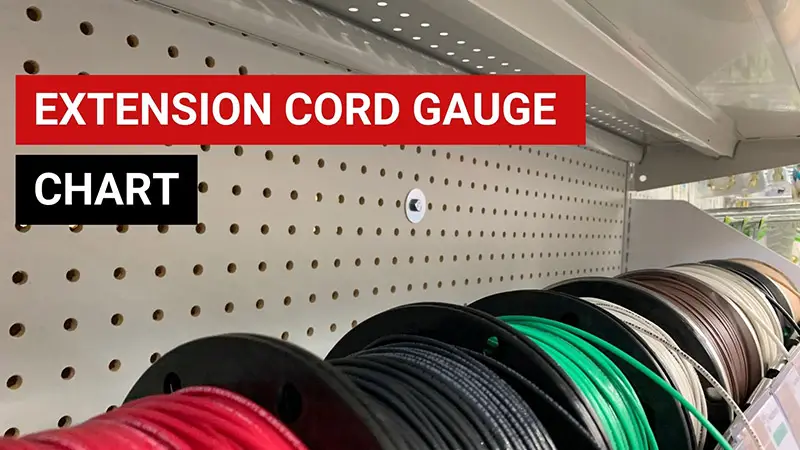A breaker can fail for various causes, including power surges, electrical overload, your breaker continually tripping, etc. Once these issues happen, the circuit breaker must be repaired or replaced.
Continue reading on how to know if a circuit breaker is bad and how to fix a faulty breaker.
Can A Breaker Go Bad – How To Check?
Yes.
When your building has blinking or flickering lights or the performance of devices is poor or intermittent, there is a high chance that the breaker is malfunctioning.
Identifying a bad circuit breaker is a necessary skill for any homeowner.
Whatever the cause, there are always indicators that can assist you in determining whether or not the breaker is malfunctioning.
Before utilizing or purchasing a circuit breaker, you should be aware of several main breaker failure indicators. And don’t panic; there are several things you can do to determine if your breaker has broken.
Here is the detailed guide to test the breaker:
Tools You Need
You will need the following tools to complete this task:
- Electrical safety gloves
- Needle-nose pliers
- Circuit Breaker (In case you need to replace a broken one)
Note: We would not advise testing the circuit breaker if you do not have the required items.
Guideline
Step 1: Unplug All Connected Electronic Devices
As a general rule, disconnect any electronics linked to the circuit you will fix. However, you may eliminate all devices connected to the same circuit you plan to test.
If you are confused about the circuit of a specific breaker, disconnect all equipment in the general region of your work area.
This is done primarily to avoid spikes, which can harm your electronics and cause an unintended shock.
Step 2: Remove The Panel
Remove the plate that has been covering the complete circuit breaker system. Depending on the configuration of your home, your breaker panels may be secured together by a hand-held lock or screws.
In either case, take extra caution when detaching the control electrical panel since you do not want to drop and damage it.
Before you begin working on this electrical job, remember to wear electrical safety gloves and ensure you have all the essential tools.
Step 3: Probe with a Multimeter
Prepare your multimeter since you will begin probing to check if the circuit breaker is broken.
First, connect the black cable to the multimeter’s ‘COM’ slot, whereas the red wire is connected to the space marked V and the Omega symbol. This ensures that your multimeter accurately reads the power of the circuit breaker.
Then, link the red wire’s test end to the screw that secures each separate breaker handle. Meanwhile, connect the black wire to the breaker’s neutral bar. They are highly visible, so you should have no difficulty meeting them.
When probing each interruption separately, be cautious. During the test, make sure your skin does not fall into touch with any metal elements of the circuit board. Otherwise, you may suffer an electric shock.
This makes it easier for the multimeter to measure the breaker’s total voltage capacity. Depending on the breaker’s specifications, the measurement on your tool should be between 120 and 250 V, based on whether it’s a single-pole or double-pole breaker.
If your voltage measurement is zero, you may need to repair the faulty circuit breaker immediately. This indicates that the breaker is defective and, if left unchecked, might cause electrical mishaps.
Common Signs To Indicate A Bad Breaker
If you suspect your breaker is malfunctioning, here are some typical warning signals to watch for:
1. Burning Smell
When the breaker breaks, the insulation and conductors overheat, emitting a burning odor. If you smell a burning odor emanating from the dashboard or feel it overheated, you need to immediately turn off the electricity in your home and contact an electrician.
2. Breaker Trips Frequently
Stumbling is not always indicative of a harmful disruptor. Other explanations for the circuit breaker’s errors include defective wiring or damaged equipment. In this case, you should investigate thoroughly to determine the true reason.
3. Hot Breakers
The heat that generates the burning odor leads the circuit to overheat. If you contact your breakers and they are hot, you are most probably handling a broken breaker. Immediately seek expert assistance.
4. Worn-out or Old Breaker
When you see any indications of an old and worn breaker, your breaker has most likely failed. Normally, each breaker will serve you about 10 years before passing its prime. It needs to go to waste by then.
5. Visibly Damaged Circuit Breaker
Overheating of a defective breaker frequently results in apparent injuries to the breaker and panel’s dashboard.
If you observe any external damage to the control panel, look for any pointers of a tripped circuit breaker and contact an electrician right once.
6. Breaker Does Not Remain Reset
When your breaker hasn’t been reset, contact an electrician to inspect its quality and any interior wire damage.
7. Power Surge
If you’ve recently seen a surge in electricity, your breaker probably broke due to a current rise. In the switchboard, you can add a surge suppressor. However, they are not always successful in limiting harm.
8. Overloaded Circuit

Circuit breakers are classified according to their present load. If the breaker is constantly overloaded, it may fail. In case you believe the breaker has failed, ensure the device connected to it is correctly loaded.
9. Short Circuit
Because of its enormous volume, the current generates a short circuit when it travels through a low-resistance path. Circuit breakers work by tripping to safeguard wire and equipment.
However, it is occasionally harmed in the process. So, you can connect the dots if you are experiencing defective circuit signs and have lately seen a short circuit.
Why Is It Significant To Know If Your Circuit Breaker Is Bad?
Our simple answer is to avoid catastrophic incidents occurring in your house. You should always check that your breakdown safety systems are functional and in excellent condition since you are unaware of the risk of fire threats brought by electrical sources.
And, in case you are unaware, any fire, no matter how minor, will always wreak havoc on your property and your family’s life. As a result, if you intend to sell your property in the future, it is in your best interests to maintain its structural integrity.
Also, a malfunctioning circuit breaker cannot function efficiently; thus, you need to take special care of them to make sure your household appliances work normally.
How To Replace A Bad Circuit Breaker?
After checking that your circuit breaker is faulty, you should immediately have an electrical repair pole. If you comprehend the method properly, the replacement should take less than 30 minutes.
Tool You Need
Before you begin, you need to prepare the following:
- A circuit breaker replacement
- Flashlight
- Screwdrivers, gloves, and safety glasses
Step To Do
To begin, switch off the main power by turning the main circuit to the off setting. Then, use a flashlight to illuminate your workplace and remove the panel cover.
Next, switch the reset button to the off state to shut down the old breaker, then remove it. While replacing the breaker, avoid touching any metal pieces.
After replacing the old breaker:
- Loosen the top of the screw holding the wire in place.
- Shut the new breaker down, then connect the cable to the replacement device.
- Push the new one into the container on the breaker panel.
It is important to make sure it buzzes as it snaps into place.
Finally, reconnect the power and re-energize the main circuit. Test the fixtures and sockets connected to the circuit to ensure that the new breaker is operational.
FAQs
How Long Can A Circuit Breaker Last?
According to the CPSC, a circuit breaker may last for 40 years if properly maintained. GFCI conventional breakers typically have a lifespan of 10 to 15 years.
A circuit breaker’s longevity is affected by many things. For example, humid conditions or frequent tripping because of overloading is bad for the breaker’s life.
Can I Replace The Circuit Breaker Myself?
No, it’s not advised.
Only replace an old breaker with a certified electrician while the electricity is turned off. This may need permission, and you have to comply with electrical rules to safeguard your property’s safety.
Before fixing the breaker, the technician will inspect the circuit and test it to ensure that the breaker is the only cause of the electrical issue. They will then turn off the electricity to the main switchboard and replace the circuit breaker.
Even if you are familiar enough with electrical wiring to identify that the breaker is the source of your problem and decide to repair it independently, it is always a good idea to have an electrician review your work when you are through.
Can The Breaker Go Bad Without Tripping?
Yes, a circuit breaker can go bad without tripping. If a breaker breaks in this manner, it must be replaced.
A tripped circuit breaker might create additional electrical difficulties in your house and perhaps a fire. If you believe a breaker is broken, contact a qualified electrician to get it repaired.
Conclusion
In general, there are several ways on how to test if a breaker is bad. Similarly, some warning indications and symptoms indicate whether a circuit breaker is not working correctly.
Hopefully, this article has served you well with some useful information. Thank you, and see you next time.
See more:










0 Comments